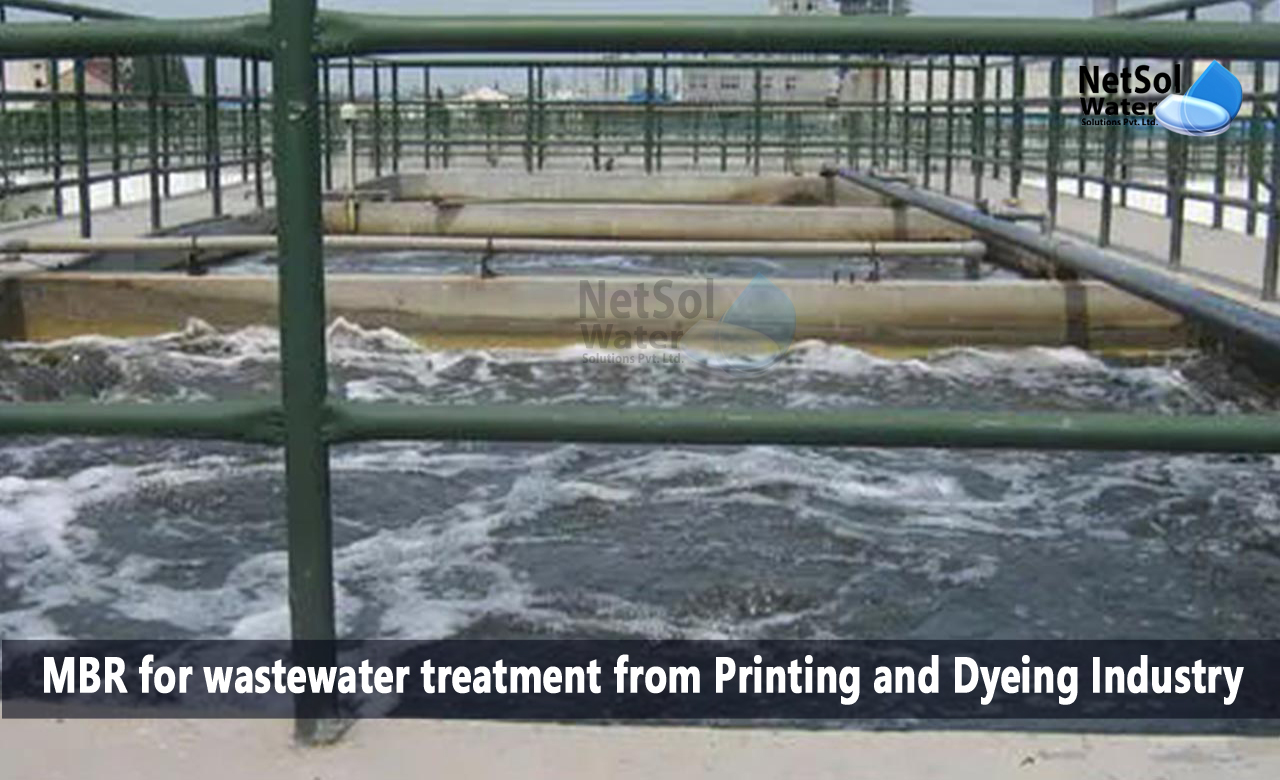Dye mixtures with different contaminants come in a range of concentrations in wastewater. Therefore, before releasing these effluents into the receiving watercourses, printing and dyeing factories are frequently required by environmental legislation to treat them.
The MBR technique offers lower pollutant content and more stability, than conventional wastewater treatment methods. There are primarily three steps involved in the treatment of printing and dyeing wastewater, by Membrane Bioreactor: filtration, degradation, and denitrification.
Composition of wastewater in the printing and dyeing industry
The dye effluents have high levels of colour, pH, suspended solids (SS), COD, BOD, metals, salts, etc. Therefore, before releasing the corresponding effluent to the receiving water body during the treatment processes, it is crucial to monitor and compare these parameters with the standard concentrations.
With a pH of around 12, the wastewater is alkaline, and about 45% of the printing and dyeing wastewater is made up of COD and BOD. The BOD of the wastewater lowers when PVA or CMC chemical slurry is used, but the COD is significant and the wastewater is harder to clean.
Other parameters to monitor in printing and dyeing industry
It is also necessary to monitor the treatment's effectiveness with reference to several measures, including total organic carbon (TOC), ammonia-nitrogen (NH4-N), nitrate-nitrogen (NO3-N), and ortho-phosphate-phosphorus (PO4-P).
Inks, slurries, dyeing auxiliaries, fibre impurities, oils, acids, alkalis, and inorganic salts, are the main components of printing and dyeing wastewater. Wastewater from printing and dyeing also exhibits complex composition, large discharge, deep colour, high alkalinity, high organic content, low biodegradability, and significant changes in water quality. It is acknowledged as one of the most challenging toxic wastewaters to handle.
MBR for wastewater treatment from printing and dyeing industry
Preliminary treatment and secondary treatment are the two main components of treatment. The main purpose of preliminary treatment is to simply eliminate high-quality elements from wastewater, including silt, etc. This section carries out the initial cleaning of wastewater from printing and dyeing.
The anaerobic zone is where secondary treatment is completed in its entirety. After initial filtration, the wastewater can fully react with the activated sludge in this area, further purifying the wastewater.
The hypoxic zone and the aerobic zone work together, to complete the entire degradation process. To create tiny molecules, the organic substances in the wastewater must first undergo slow degradation. The wastewater is then repeatedly subjected to denitrification reactions to further purify it.
Conclusion
Traditional printing and dyeing wastewater treatment technology has benefits, but membrane bioreactor technology also has benefits that traditional printing and dyeing wastewater treatment technology cannot achieve.
Choose the best providers of wastewater treatment plants in India!
At Netsol Water, we are committed to providing high-performing water and wastewater treatment systems including membrane bioreactors, to assist commercial and industrial enterprises with their treatment requirements. We have earned a reputation for providing top-notch service and customisations, which help our clients lower operating expenses and increase the life-span of their equipment.
The purchase of these systems includes the installation, the manufacturer's warranty, as well as a 24-hour customer service. You can reach us via phone at +91 9650608473 or drop a mail at enquiry@netsolwater.com for additional information.



